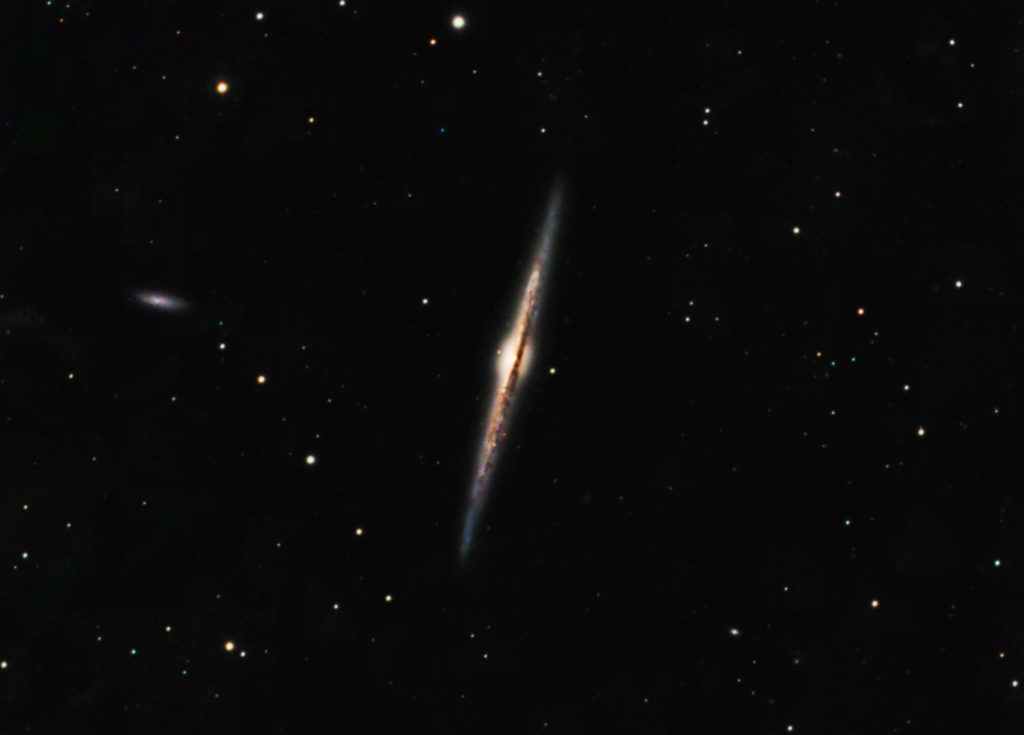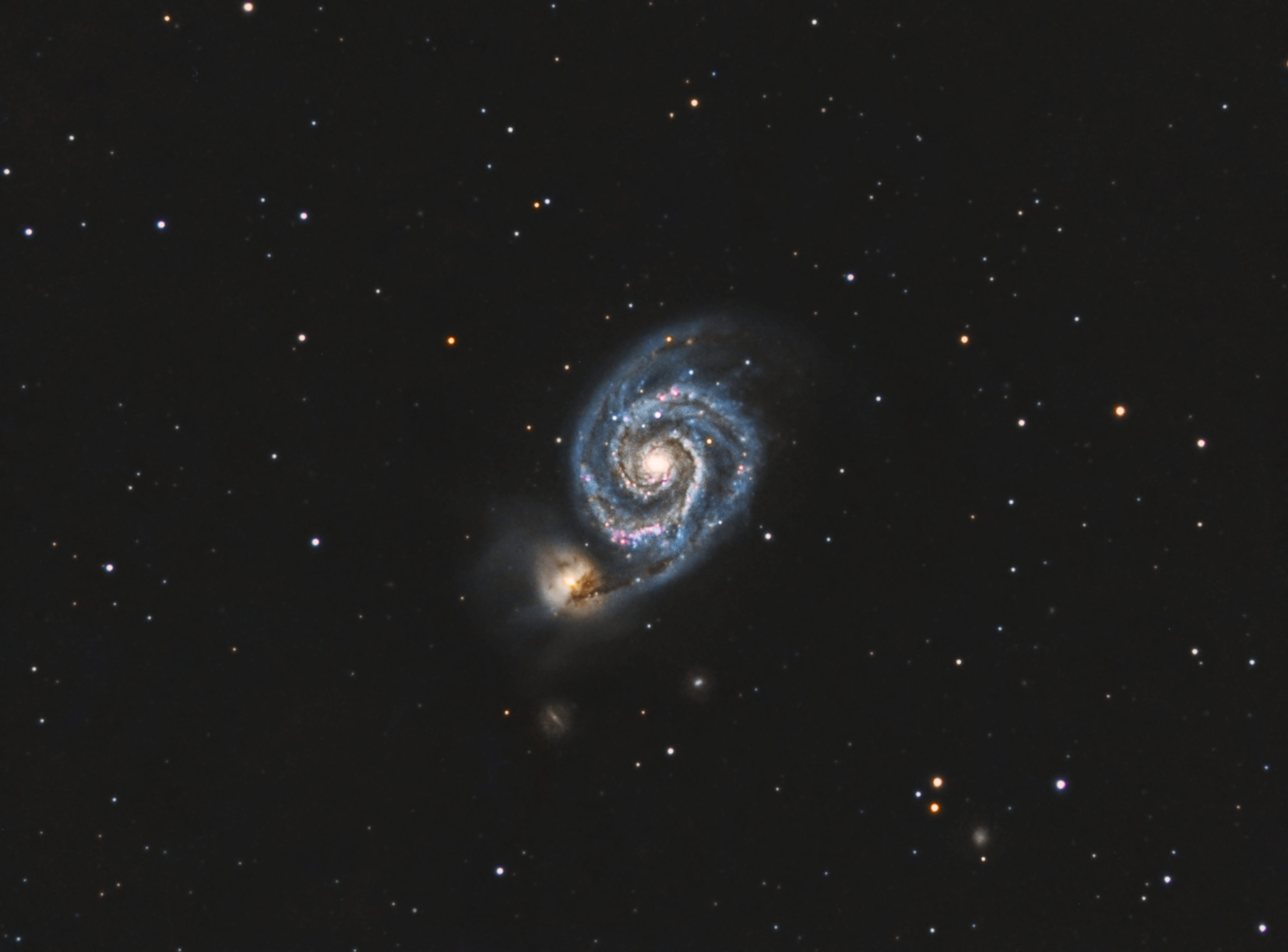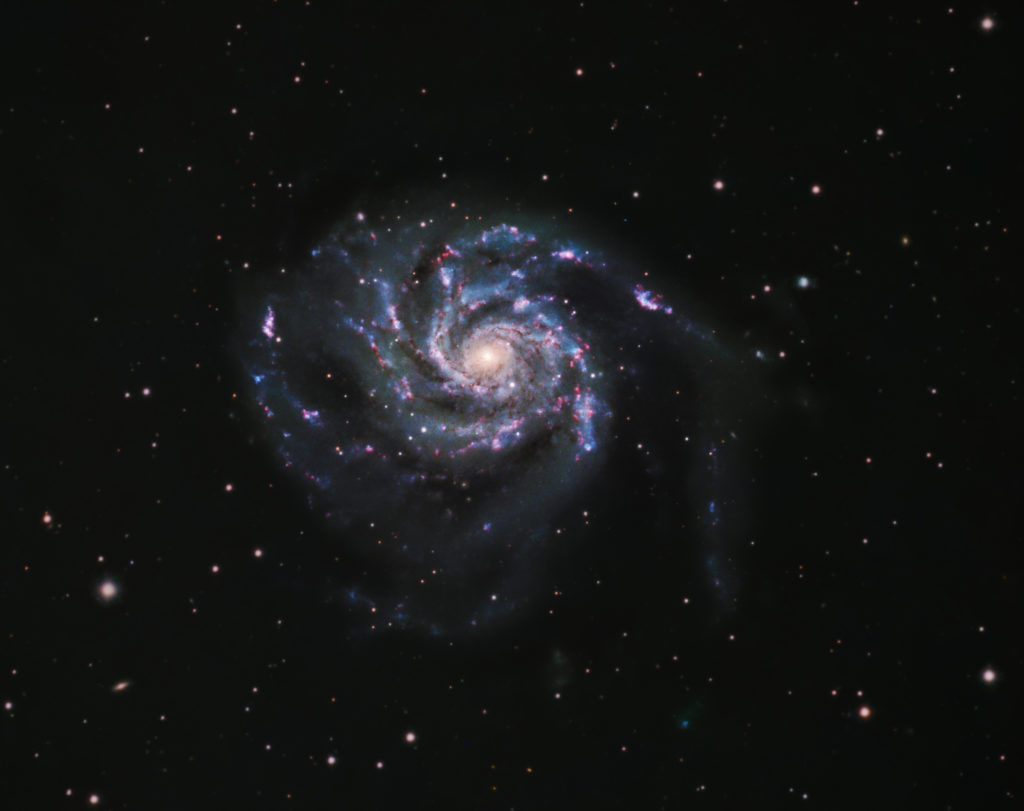Are you an astrophotographer with a telescope looking for some incredible deep-sky targets to photograph in April 2023? Look no further! In this v/blog, I’ll show 25 spectacular deep-sky astrophotography targets you don’t want to miss! If you don’t have a telescope, no problem – I’ve got you covered with this v/blog about 9 astounding astronomy events you can witness with the naked eye in April 2023.
The long-awaited spring has arrived! With the milky way low on the northern horizon at midnight, we are still in the wondrous galaxy season. From March till the end of May, the constellations that are high in the sky at midnight point away from our Milky Way galaxy, offering us a unique chance to explore far into the universe. April offers us astrophotography geeks the opportunity to observe and photograph galaxies and galaxy clusters that lie tens to hundreds of millions of lightyears away. It’s always an incredible feeling when I realize that the light coming from these galaxies had to travel millions of years at the speed of light to finally reach the camera sensors inside our telescopes. We’re essentially seeing galaxies as they were millions of years ago! Who knows, perhaps there are aliens with telescopes out there looking at our milky way galaxy too? The beauty of the night sky never ceases to amaze me.
Are you ready to explore the night sky? I’m here to guide you through the best of the best. Plus, I’ll share three of my most valuable tips that will help you take stunning pictures of galaxies and I’ll show you some of my own pictures I took last year along the way. I’ve put 25 awesome deep-sky objects in chronological order, so you know when each of these objects will cross the meridian in the south at midnight. That’s when these objects are at their highest point in the night sky. I’ll mention the name of the objects, the constellation where you’ll be able to find them, as well as the apparent size in degrees and arc minutes. You can see the pictures for each of these targets in the video; they are mainly from the Aladin Sky Atlas unless stated otherwise. I’m sure you can take even better pictures with your backyard telescope! Let’s get started!
April 1 – Coma Pinwheel Galaxy
On the first of April, the Coma Pinwheel Galaxy, also designated as M99 or NGC4254, will be crossing the meridian at midnight in the constellation Virgo. This beautiful spiral galaxy has an apparent size of 5.5 by 5.5 arcminutes.
April 1 – Silver Needle Galaxy
On the first of April, the Silver Needle Galaxy, NGC4244, will cross the meridian at midnight in the constellation Canes Venatici. This beautiful spiral galaxy has an apparent size of 16.5 by 2 arcminutes.
April 1 – NGC4258
You probably think this is a joke, but it’s not. The third object that will cross the meridian at midnight on the first of April is NGC4258 in the constellation Canes Venatici. This spiral galaxy has an apparent size of 18.5 x 7 arcminutes.
April 2 – Swelling Spiral Galaxy
On April 2nd, the Swelling Spiral Galaxy, also designated as M61 or NGC4303, will also be crossing the meridian at midnight in the constellation Coma Berenices. This spiral galaxy has an apparent size of 6.5 by 6 arcminutes.
April 2 – Blow-dryer Galaxy
On April 2nd, the Blow-dryer Galaxy, also designated as M100 or NGC4321, will cross the meridian at midnight in the constellation Coma Berenices. This spiral galaxy has an apparent size of 7.5 by 6 arcminutes.
Tip 1: Photograph galaxies under dark skies!
Let me give you my first tip on how to photograph these incredible galaxies! When imaging galaxies, we’re dealing with objects that emit light across the visible light spectrum, so it’s best to photograph them under dark skies, during a new moon, and away from city lights that can outshine or pollute the night sky. But if that’s not possible, don’t worry – you can use broadband light pollution filters like the Optolong L-Enhance or IDAS LPS filters to block out the major sources of light pollution. Just be aware that these filters will also block out some of the light emitted by the galaxies. Now, let’s keep going!
April 3 – Markarian’s Chain
On April 3, one of my favorite galaxy clusters known as Markarian’s Chain, which includes galaxies like M84 and M86, will cross the meridian at midnight in the constellation Virgo. The whole galaxy cluster has an apparent size of about 3 degrees, or 180 arcminutes, and is best photographed with a modest focal length telescope of about 300 to 500mm.

This is my picture from last year, taken with my Teleskop Service 80/480mm Photoline refractor telescope and my ASI1600MM Pro camera using LRGB filters. The total integration time was about four hours.
April 4 – M88/NGC4501
On April 4, M88, or NGC4501, will cross the meridian at midnight in the constellation Coma Berenices. This wonderful spiral galaxy has an apparent size of 7 by 4 arcminutes.
April 5 – M58/NGC4579
On April 5, M58 also called NGC4579 will cross the meridian at midnight in the constellation Virgo. This spiral galaxy has an apparent size of 6 by 5 arcminutes.
April 5 – M 91 / NGC 4548
On April 5, M91, also designated as NGC4548, will cross the meridian at midnight in the constellation Coma Berenices. This spiral galaxy has an apparent size of 6×4 arcminutes.
April 5 – Needle Galaxy
On April 5, the needle galaxy, also called NGC4565, will cross the meridian at midnight in the constellation Coma Berenices. This edge-on spiral galaxy has an apparent size of 16×2 arcminutes.

I took this picture with my Edge HD 8” backyard telescope with a .7 reducer and my ASI1600MM Pro Camera. I was experimenting with 5-minute intervals last year, and the total integration time using LRGB broadband filters was about 10 hours.
April 5 – Koi Fish Galaxy
On April 5, the Koi Fish galaxy, also called NGC4559, will cross the meridian at midnight in the constellation Coma Berenices. This galaxy has an apparent size of 11×4.5 arcminutes.
April 6 – Sombrero Galaxy
On April 6, the Sombrero Galaxy, also called M104 or NGC4594, will cross the meridian at midnight in the constellation Virgo. This beautiful spiral galaxy has an apparent size of 8.5×4 arcminutes.
Tip 2: Use an H-alpha Narrowband Filter
Let me give you my second tip to photograph galaxies: use an additional H-alpha narrowband filter to capture the hydrogen-rich nebulas in other galaxies! Combining your H-alpha with regular colour data will make the galaxies stand out and show the hydrogen-rich nebulas within them. That’s a great way to make your galaxies look amazing! Now, let’s get back to the overview!
April 7 – Whale Galaxy
On April 7, the Whale Galaxy, also called NGC4631, will cross the meridian at midnight in the constellation Canes Venatici. This beautiful spiral galaxy has an apparent size of 15×3 arcminutes.
April 9 – NGC4725
On April 9, NGC4725 will cross the meridian at midnight in the constellation Coma Berenices. This spiral galaxy has an apparent size of 11×7.5 arcminutes.
April 9 – Croc’s Eye Galaxy
On April 9, the Croc’s Eye Galaxy, also called M94 or NGC4736 will cross the meridian at midnight in the constellation Canes Venatici. This beautiful spiral galaxy has an apparent size of 14.5×12 arcminutes.
April 10 – Coma Cluster
On April 10, the Coma Cluster, also designated as Abell 1656 will cross the meridian at midnight in the constellation Coma Berenices. This beautiful galaxy cluster has an apparent size of about 3 and a half degrees, or 210 arcminutes, and can be best captured with a modest focal length telescope of about 500mm.
April 14 – NGC 5005
On April 14, NGC5005 will cross the meridian at midnight in the constellation Canes Venatici. This spiral galaxy has an apparent size of 6×3 arcminutes.
Tip 3: Astrophotography gear to image galaxies!
My third tip is about the kind of gear needed to photograph these awesome galaxies. In general, I’d recommend a long focal-length telescope of at least 1000mm or more, to take detailed photos of individual galaxies. As mentioned in the overview, most galaxies are about 5 to 20 arcminutes in apparent size. If we compare that to the size of the moon, which is about 30 arcminutes, galaxies are about 3 to 6 times smaller. Of course, there are some exceptions. Galaxy clusters like Markarian’s chain show multiple galaxies in a larger field of view and are best captured with telescopes that have a modest focal length of about 500mm. If you’re going to use a long focal length telescope, you also need a good quality equatorial mount that can track these galaxies in the night sky with a sub-arcsecond accuracy. Let’s continue with the final part of this overview and let me give you one extra bonus tip at the end!
April 14 – Waterbug Galaxy
On April 14, the Waterbug Galaxy, also known as NGC5033, will cross the meridian at midnight in the constellation Canes Venatici. This spiral galaxy has an apparent size of 11×5 arcminutes.
April 15 – M53/NGC5024
On April 15, M53, also designated as NGC5024, will cross the meridian at midnight in the constellation Coma Berenices. This is not a galaxy, but a wonderful globular cluster, with an apparent size of 13×10 arcminutes.
April 15 – Sunflower Galaxy
On April 15, the Sunflower galaxy, also called M63, or NGC5055, will cross the meridian at midnight in the constellation Canes Venatici. This spiral galaxy has an apparent size of 12.5×7 arcminutes.
April 19 – Whirlpool Galaxy
On April 19, one of the most popular galaxies known as the whirlpool galaxy, also designated as M51 or NGC 5192, will cross the meridian at midnight in the constellation Canes Venatici. This wonderful interacting spiral galaxy has an apparent size of 11×7 arcminutes.

This is my picture of the whirlpool galaxy taken last year, with my edge HD 8” and ASi1600MM Pro camera. I used ZWO RGB broadband and Ha narrowband filters to image this wonderful galaxy. My total integration time was about 5 hours.
April 21 – NGC 5248
On April 21, NGC 5248 will cross the meridian at midnight in the constellation Bootes. This spiral galaxy has an apparent size of 6×4.5 arcminutes.
April 22 – M3/NGC5272
On April 22, M3 or NGC5272 will cross the meridian at midnight in the constellation Canes Venatici. This is not a galaxy, but a beautiful globular cluster, with an apparent size of 18 arcminutes.
April 25 – NGC5364
On April 25, NGC 5364 will cross the meridian at midnight in the constellation Virgo. This galaxy has an apparent size of 7×4.5 arcminutes.
April 27 – Pinwheel Galaxy
On April 27, another favorite of mine known as the pinwheel galaxy, also designated as M101 or NGC 5457, will cross the meridian at midnight in the constellation Ursa Major. This wonderful spiral galaxy has an apparent size of 29×27 arcminutes.

This is a picture I took last year of the pinwheel galaxy with my Edge HD 8” and my asi1600MM Pro camera, using LRGB filters. My total integration time was about 5 hours.
Bonus tip: Exposure time
My bonus tip is about exposure time. Galaxies are generally quite bright, especially the core of these galaxies, so you don’t need very long exposure times to photograph galaxies. Often, one or two minutes is already enough to photograph a galaxy, and a bright core might take even less than a minute to capture its details.
If you have any questions about this topic, don’t hesitate to ask in the comment section below or e-mail me at astroforumlive@gmail.com. Thanks for stopping by, and here’s to clear skies!
One Reply to “25 MUST-SEE Deep-Sky Objects in April 2023 with a Telescope!”